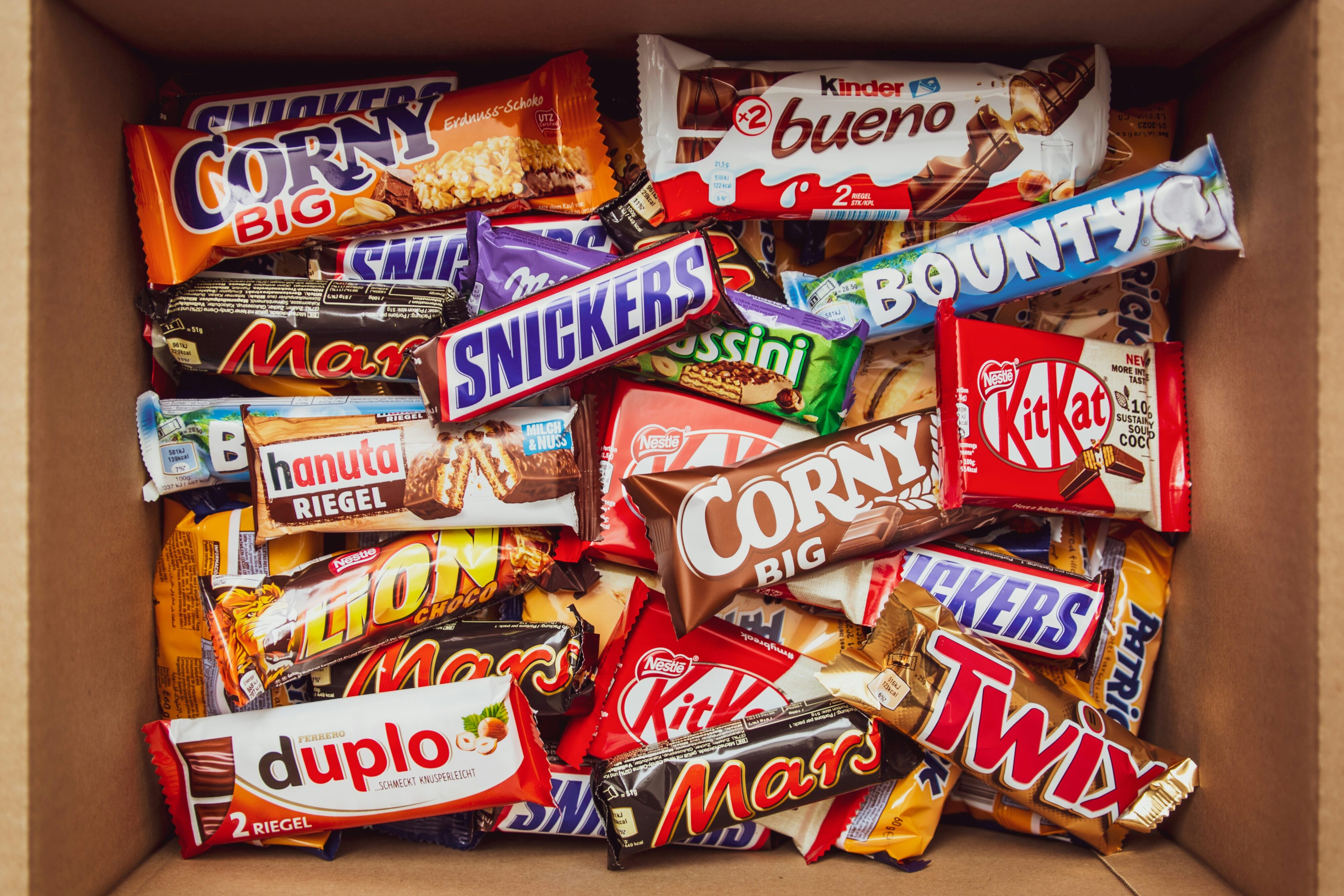
Sarah Banholzer

Sarah Banholzer
Halloween is one of the best holidays. With its spooky aura, festive costumes, and the autumn crispness in the air, this time of year is always a great excuse to celebrate with friends and dress up as your alter ego.
But along with the fun and celebrations of the holiday, comes a lot of waste. Thus, Halloween is a great time to assess your waste production.
There are many ways to reduce your consumption levels surrounding the spooky holiday, including trading old costumes with friends, making your Halloween decorations out of repurposed materials, and DIYing your Halloween costumes. Check out this fun and informative video published on Planet Forward last year about the importance of sustainable Halloween costumes.
However, one area that we still find to be a bit of a sustainability challenge is Halloween candy wrappers.
Candy and snacks pose a big problem due to the single-use plastic that comes with the treats. On average, Americans buy more than 600 million pounds (based on recent sales numbers) of candy per Halloween season. This candy produces a massive amount of discarded plastic packaging and individual candy wrappers.
Multiple organizations have created candy wrapper recycling programs to help mitigate this problem.
Loggerhead Marinelife Center ran a nationwide Unwrap the Waves program to collect candy wrappers and recycle them, to prevent them from entering our oceans. For the three years this program ran, Unwrap the Waves recycled more than 450,000 candy wrappers.
Similarly, Rubicon created its Trash to Treasure program in 2019 to distribute recycling boxes during the Halloween season to businesses, schools, and community organizations, in which people were encouraged to bring their candy wrappers. Once filled, the candy wrapper-filled boxes were sent back to Rubicon to be cleaned, sorted, and turned into renewed plastic to be used once more.
In its five years of operation, Trash to Treasure saw great success, expanding to schools and organizations in every state of the country and Valentine’s Day season, in addition to Halloween.
Despite this apparent success of the program, Rubicon announced that it would be pausing Trash to Treasure for the 2024 Halloween season.
With Rubicon’s program also suspended, there isn’t an equivalent free candy wrapper recycling program.
TerraCycle sells candy and snack wrapper recycling boxes. However, with a small recycling box at $105, this price range is unfeasible for most individuals.
So what’s the solution to the candy wrapper conundrum?
While consumers can do their best to opt for buying Halloween candy with the least amount of plastic packaging, Halloween candy exists on the short list of foods that need some sort of individual packaging.
Trick-or-treating etiquette necessitates that candy given out is pre-wrapped with seals and closings intact. This is so parents can ensure that the candy their children are given is safe to eat. Thus, we cannot get rid of candy wrappers entirely.

We should encourage candy corporations, such as Hershey, Nestle, and Mars, to produce our favorite candies with compostable or recyclable packaging.
Additionally, candy corporations themselves should run large-scale candy wrapper recycling programs. Taking from the structure of Trash to Treasure, these corporations should give schools, businesses, and organizations recycling boxes, free of charge, to collect candy wrappers and reuse for the production of future candy.
Mars has done this on a microscopic scale. In 2022, the candy corporation that makes Snickers and M&Ms, partnered with Rubicon to distribute 17,400 candy waste collection bags to U.S. consumers. People were able to fill the bags with candy wrappers and mail them back to a special recycler, G2 Revolution, in Illinois.
If all 17,400 bags were mailed back full, Mars would have recycled 2 tons of recycled wrappers, which is only a fraction of the total amount of candy wrappers discarded every Halloween season.
Even if more candy corporations ran candy wrapper recycling programs, there still exists the issue of a lack of proper infrastructure to recycle candy wrappers.
Candy wrappers and plastic wrappers, in general, pose a difficult challenge for recycling because they are often made of mixed materials, such as plastic and foil. These different materials must be separated during recycling, which adds time and energy to the recycling process.
Additionally, candy wrappers tend to be thin and flimsy, which allows them to easily bypass recycling sorting machines.
Candy wrappers must be thoroughly cleaned of the food waste prior to being recycled and the mix of colors on candy wrappers often produces an unappealing brown color when recycled into new materials.
These difficulties cause recycling candy wrappers to be costly and they produce such low-grade plastic that the value of the new plastic doesn’t meet the value of the recycling process. Which, in turn, means candy corporations are not inclined to commit to this process.
Better, more efficient recycling infrastructure must be invented to reduce the cost of candy wrapper recycling and make it more profitable for the organizations that engage with this process.
Hershey has stated that it is committed to having 100% of their plastic packaging be recyclable, reusable, or compostable by 2030.
Additionally, Mars has invested hundreds of millions of dollars to redesign 12,000 packaging components to be reusable, recyclable, or compostable.
This is a large feat to surmount, and we will all be watching to see if the first and fourth-largest candy corporations by sales, respectively, can do what it takes to minimize candy wrapper waste and advocate for more sustainable practices, especially with seasonal candy.
With that, have a safe and festive Halloween!